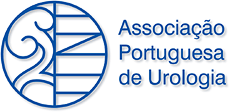Prostate Cancer and Fertility: A Review of the Implications of the Different Therapeutic Options
DOI:
https://doi.org/10.24915/aup.151Keywords:
Infertility, Male/therapy, Prostatic Neoplasms/complicationsAbstract
Introduction: Prostate cancer is the second most common neoplasm in men, and its incidence is higher in the group aged 50-69 years. It is estimated that about 5% of cases are diagnosed in men under the age of 50. Given the current demographic developments, the desire for paternity is often postponed. Thus, it is relevant that the urologist can explain the different repercussions that the existing therapies for malignant prostate cancer have on male fertility. The purpose of this systematic review is to compare the repercussions that the diverse therapeutic options used in prostate cancer have on male fertility.
Methods: a qualitative review of the scientific literature published between 1987-2019, according to the ENTREG guidelines and PRISMA methodology, through PubMed database. All articles written in English and covering the topics described were consi- dered, including randomized controlled studies, meta-analyses and systematic reviews. All the abstracts of the publications were read by two authors, with the consequent selection of those that met the defined criteria, after evaluating its quality using the CASP qualitative checklist. In case of divergent opinions, a third urologist was consulted to decide on inclusion.
Results: According to the defined criteria, 436 references were identified and 10 publications were included as they refer directly to the defined objective. Despite the few published studies, there is evidence that active surveillance alone has no implications for fertility. Although there are no comparative studies, according to the currently available data, focal therapy and brachytherapy seem to be the therapeutic options with the least likelihood of permanent impairment of the capacity for natural fertilization as opposed to radical prostatectomy, radiotherapy, hormonotherapy and chemotherapy.
Conclusion: Nowadays, with increased survival after prostate cancer treatment, it is relevant to evaluate the repercussions on fertility of the existing therapeutic options for prostate cancer, so that patients can make an informed decision and, if necessary, resort to gametes preservation measures prior to therapeutic intervention. Although there are no comparative studies, focal therapy and brachytherapy appear to have less effect on male fertility. Active surveillance is currently the only option with no consequences on fertility.
Downloads
References
Ganz PA. Survivorship: Adult Cancer Survivors. Prim Care - Clin Off Pract. 2009;36:721-41. doi:10.1016/j.pop.2009.08.001
Laidsaar-Powell R, Konings S, Rankin N, Koczwara B, Kemp E, Mazariego C,et al. A meta-review of qualitative research on adult cancer survivors: current strengths and evidence gaps. J Cancer Surviv. 2019;13:852-89. doi:10.1007/s11764-019-00803-8
Farhood B, Mortezaee K, Haghi-Aminjan H, Khanlarkhani N, Salehi E, Nashtaei MS, et al. A systematic review of radiation-induced testicular toxicities following radiotherapy for prostate cancer. J Cell Physiol. 2019;234:14828-37. doi:10.1002/jcp.28283
Tran S, Boissier R, Perrin J, Karsenty G, Lechevallier E. Review of the different treatments and management for prostate cancer and fertility. Urology. 2015;86:936-41. doi:10.1016/j.urology.2015.07.010
Goldfarb S, Mulhall J, Nelson C, Kelvin J, Dickler M, Carter J. Sexual and reproductive health in cancer survivors. Semin Oncol. 2013;40: 726-44. doi:10.1053/j.seminoncol.2013.09.002
Mydlo JH, Lebed B. Does brachytherapy of the prostate affect sperm quality and/or fertility in younger men? Scand J Urol Nephrol. 2004; 38:221-4. doi:10.1080/00365590410025451
Biedka M, KuŸba-Kryszak T, Nowikiewicz T, Zyromska A. Fertility impairment in radiotherapy. Wspolczesna Onkol. 2016;20:199-204. doi:10.5114/wo.2016.57814
Sood A, Cole D, Abdollah F, Eilender B, Roumayah Z, Deebajah M, et al. Endocrine, sexual function, and infertility side effects of immune checkpoint inhibitor therapy for genitourinary cancers. Curr Urol Rep. 2018;19:68. doi:10.1007/s11934-018-0819-7
Khandwala YS, Zhang CA, Lu Y, Eisenberg ML. The age of fathers in the USA is rising: An analysis of 168 867 480 births from 1972 to 2015. Hum Reprod. 2017;32:2110-6. doi:10.1093/humrep/dex267
Anderson RC, Newton CL, Anderson RA, Millar RP. Gonadotropins and Their Analogs: Current and Potential Clinical Applications. Endocr Rev. 2018;39:911-37. doi:10.1210/er.2018-00052
Hanson BM, Eisenberg ML, Hotaling JM. Male infertility: a biomarker of individual and familial cancer risk. Fertil Steril. 2018;109:6-19. doi:10.1016/j.fertnstert.2017.11.005
Tvrda E, Agarwal A, Alkuhaimi N. Male reproductive cancers and infertility: A mutual relationship. Int J Mol Sci. 2015;16:7230-60. doi: 10.3390/ijms16047230
Hourvitz A, Goldschlag DE, Davis OK, Gosden LV, Palermo GD, Rosenwaks Z. Intracytoplasmic sperm injection (ICSI) using cryopreserved sperm from men with malignant neoplasm yields high pregnancy rates. Fertil Steril. 2008;90:557-63. doi:10.1016/j.fertnstert. 2007.03.002
Tong A, Flemming K, McInnes E, Oliver S, Craig J. Enhancing transparency in reporting the synthesis of qualitative research: ENTREQ. BMC Med Res Methodol. 2012;12:1. doi:10.1186/1471-2288-12-181
Itens P, Revis R, Uma P. Principais itens para relatar Revisões sistemáticas e Meta-análises: A recomendação PRISMA. Epide- miol Serviços Saúde. 2015;24:335-42. doi:10.5123/s1679-49742015000200017
Page MJ, McKenzie JE, Bossuyt PM, Boutron I, Hoffmann TC, Mulrow CD, et al. The PRISMA 2020 statement: An updated guideline for reporting systematic reviews. BMJ. 2021;372. doi:10.1136/bmj.n71
CASP. Critical Appraisal Skills Programme (2018). CASP (insert name of checklist i.e. Cohort Study) Checklist. 1994;(2018):0-3.[accessed Oct 2019] Available from: https://casp-uk.net/wp-content/uploads/2018/01/CASP-Cohort-Study-Checklist_2018.pdf.
Raina R, Agarwal A, Goyal KK, Jackson C, Ulchaker J, Angermeier K, et al. Long-term potency after iodine-125 radiotherapy for prostate cancer and role of sildenafil citrate. Urology. 2003;62:1103-8. doi: 10.1016/S0090-4295(03)00767-2
Falk AT, Chargari C, Hannoun-Lévi JM, et al. Brachytherapy and fertility. Hum Fertil. 2016;19:85-9. doi:10.1080/14647273.2016. 1190466
Rothman MS, Wierman ME. The role of gonadotropin releasing hormone in normal and pathologic endocrine processes. Curr Opin Endocrinol Diabetes Obes. 2007;14:306-10. doi:10.1097/MED. 0b013e3281e2c9fc
Sandow J, von Rechenberg W, Engelbart K. Pharmacological studies on androgen suppression in therapy of prostate carcinoma. Am J Clin Oncol. 1988;11 Suppl 1. doi:10.1097/00000421-198812001-00002
Published
Issue
Section
Copyright (c) 2023 Portuguese Association of Urology

This work is licensed under a Creative Commons Attribution-NonCommercial-NoDerivatives 4.0 International License.




